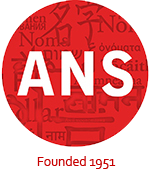 The Museum of Jewish Heritage in New York, New York is currently holding a moving exhibition on the fates of hundreds of displaced children who found temporary shelter and relief in a German convent named Kloster Indersdorf. The convent was requisitioned immediately after WWII by the US armed forces for the care and potential repatriation of homeless children found on the streets of war-torn Europe. Dangerously malnourished and severely traumatized by the horrors of the Holocaust, these smallest survivors often had little more than their first and last name as a connection to their birth families and homelands. Entitled “My Name is…The lost children of Kloster Indersdorf”, this powerful exhibition is a haunting reminder of the devastating effect war has upon the most innocent and powerless of victims, both past and present. The exhibit will remain open until the 23rd of July 2017.
The Museum of Jewish Heritage in New York, New York is currently holding a moving exhibition on the fates of hundreds of displaced children who found temporary shelter and relief in a German convent named Kloster Indersdorf. The convent was requisitioned immediately after WWII by the US armed forces for the care and potential repatriation of homeless children found on the streets of war-torn Europe. Dangerously malnourished and severely traumatized by the horrors of the Holocaust, these smallest survivors often had little more than their first and last name as a connection to their birth families and homelands. Entitled “My Name is…The lost children of Kloster Indersdorf”, this powerful exhibition is a haunting reminder of the devastating effect war has upon the most innocent and powerless of victims, both past and present. The exhibit will remain open until the 23rd of July 2017.








